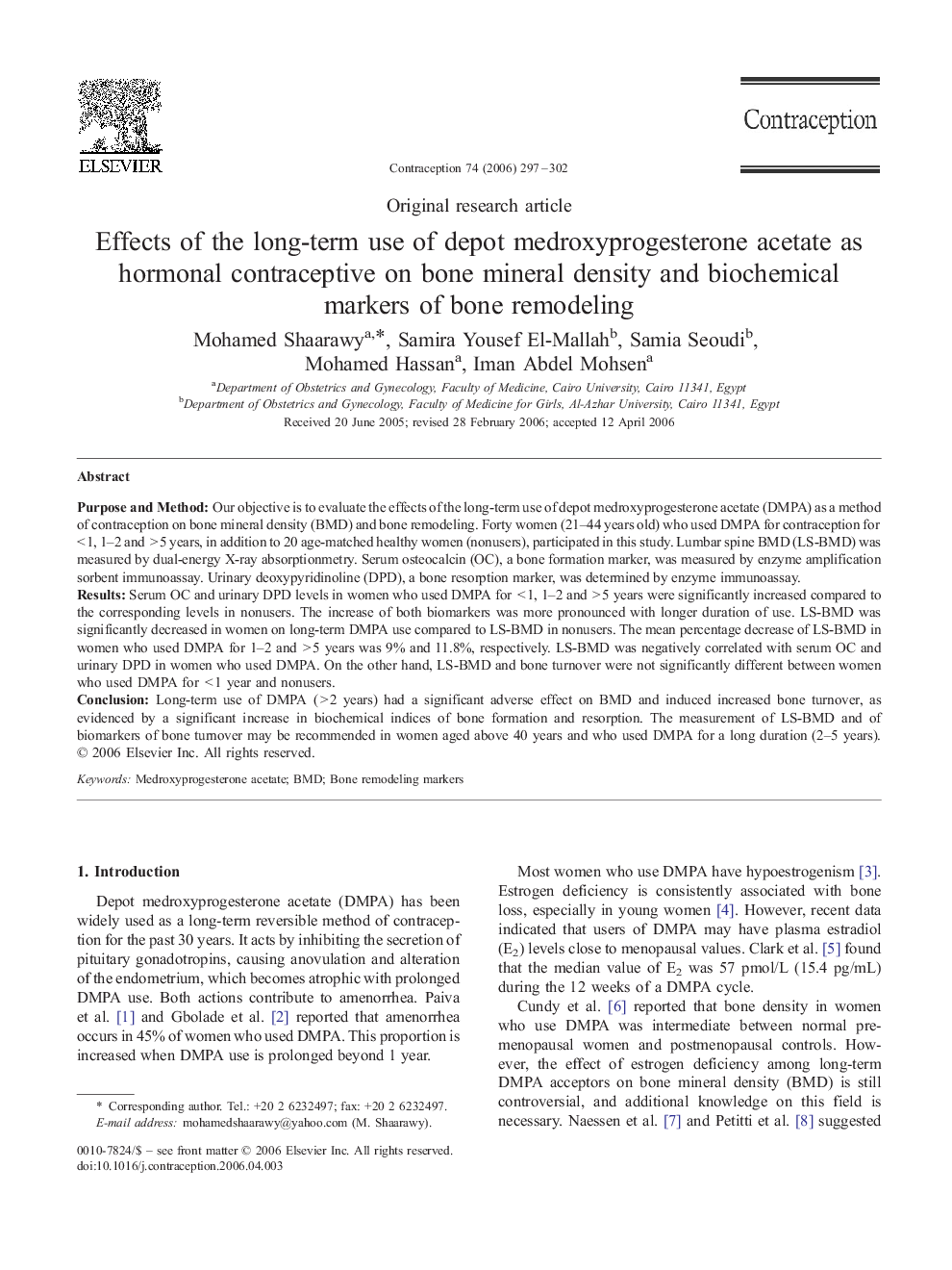| Article ID | Journal | Published Year | Pages | File Type |
|---|---|---|---|---|
| 3916097 | Contraception | 2006 | 6 Pages |
Purpose and MethodOur objective is to evaluate the effects of the long-term use of depot medroxyprogesterone acetate (DMPA) as a method of contraception on bone mineral density (BMD) and bone remodeling. Forty women (21–44 years old) who used DMPA for contraception for <1, 1–2 and >5 years, in addition to 20 age-matched healthy women (nonusers), participated in this study. Lumbar spine BMD (LS-BMD) was measured by dual-energy X-ray absorptionmetry. Serum osteocalcin (OC), a bone formation marker, was measured by enzyme amplification sorbent immunoassay. Urinary deoxypyridinoline (DPD), a bone resorption marker, was determined by enzyme immunoassay.ResultsSerum OC and urinary DPD levels in women who used DMPA for <1, 1–2 and >5 years were significantly increased compared to the corresponding levels in nonusers. The increase of both biomarkers was more pronounced with longer duration of use. LS-BMD was significantly decreased in women on long-term DMPA use compared to LS-BMD in nonusers. The mean percentage decrease of LS-BMD in women who used DMPA for 1–2 and >5 years was 9% and 11.8%, respectively. LS-BMD was negatively correlated with serum OC and urinary DPD in women who used DMPA. On the other hand, LS-BMD and bone turnover were not significantly different between women who used DMPA for <1 year and nonusers.ConclusionLong-term use of DMPA (>2 years) had a significant adverse effect on BMD and induced increased bone turnover, as evidenced by a significant increase in biochemical indices of bone formation and resorption. The measurement of LS-BMD and of biomarkers of bone turnover may be recommended in women aged above 40 years and who used DMPA for a long duration (2–5 years).
